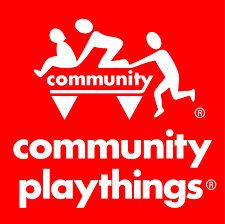Why Children Need Physical Activity
Movement as the foundation of learning.
| June 2025Just last week, a highly skilled veteran teacher told me she was leaving education. Her typically energetic class has hit the spring season in a barn burner of inattention, body slamming, interruptions, and other behavior challenges that have sent her to clock out—permanently. She is not the first to tell me this story, and she will probably not be the last.
What is bringing about the significant rise in behavior issues (Peetz 2025) that are sending educators out of the classroom? The answer might seem counter-intuitive, but the reason kids have out-of-control bodies is a serious lack of physical activity (Pica 2019). Read on to see how big-body physical play builds students ready to learn
Physical play is something children crave. How do we know? Open the door to a classroom, the gate to the playground, or the door to the gym. What do children do? They take off running and screaming, in delight. This is Mother Nature’s signal, urging children to move and establish the neural connections essential for maintaining calm bodies and focused minds in the classroom.
Foundational Physical Skills
We have seen a shift in our culture, placing a significant focus on success as measured by academic milestones. You’ve seen all the headlines about reading and math test scores. The pressure to achieve academically has translated to more time devoted to sit-at-a-desk work at younger and younger ages. The two-recess-a-day schedule of previous generations has been replaced with extended literacy blocks and on-screen assessments. This focus on seated work ignores the fundamental connection between movement and brain development. In other words, our sit-to-learn culture is crowding out time needed for the physicality that wires the brain for appropriate growth. Children’s bodies seek what they need, so replacing needed movement with seated work just causes the body to find movement in other, less productive ways.
Moreover, there are fundamental physical skills that are essential for academic success. For example:
To read:
- Eyes need to be able to focus on a focal point and move left to right across the page.
- The core needs to be strong enough to hold the head steady and erect.
- Arms and hands need to be strong enough to hold a book.
To write:
- Hands need to be strong and dexterous enough to grip and control a pencil.
- The body must understand the appropriate amount of force to apply to the pencil.
- Students must have the spatial understanding of how much room a letter or word takes up on the page.
To solve a math equation:
- Students must be able to recognize patterns.
- They must also be able to understand and repeat a sequence of steps.
These skills, essential to building a foundation for academics, are developed from physical movement. They can only be achieved by moving the body, and they are best achieved through play. For example:
- Throwing and catching so the eyes learn to track and focus.
- Climbing, pushing, and pulling so the upper body, hands, and core become strong and the brain understands force.
- Playing hide-and-seek to learn how much space our bodies take up.
- Jumping and skipping to practice sequencing and patterning.
The trial and error of physical play helps the brain and body get ready to learn. Without ample time moving the body, the brain and the body have some catching up to do. When children in school struggle with self-regulation and self-control, adults often see a behavioral issue. What those adults should see is bodies and brains that haven’t spent enough time moving. The inability to sit still at circle time might not be simple poor behavior. Instead, it might be a body that is still working on understanding how much space it takes up, and wiggling is the best way to figure that out. Shoving a friend out of the way might not be an aggressive act. Instead, it could be a body that hasn’t learned how much force to apply to a given task. Giving up easily on a challenging task might not be laziness. It might be a body and brain that haven’t learned how to repeat a sequence.
Academic skills and physical skills build from the basic to the complex. You can’t run until you walk, and you can’t do algebra without first mastering arithmetic. You must gallop before you skip, and you need to read Dick and Jane before Chaucer. And before all of that, young brains need young bodies to move to build the most basic of all skills. Without a mastery of foundational skills, learning higher level skills is difficult and frustrating. We are doing our children a disservice when we ignore the physical nature of these foundational skills.
Executive Function
Beyond these fundamental physical skills, movement also plays a role in developing executive function skills like working memory, resisting distractions, and the cognitive flexibility to integrate new information. These skills are essential for success in a classroom environment, even at the preschool level. A recent study in the journal Pediatric Research (Garcia-Alonso 2025) found that executive function in preschoolers is much better in those who have a higher physical fitness level, and a higher fitness level is only going to be achieved from ample time in big-body physical play.
Executive function skills only become more important as children progress through school and the academic tasks get more challenging. A colleague of mine recently led a session with me at a national education conference demonstrating the impact of sedentary behaviors on her fourth-grade students. As an experiment prior to our presentation, she led her class of sixteen nine-year-old girls in three straight hours of classwork with no breaks. When it was over, she explained it was an experiment and asked them to write down how they felt. The responses ranged from “Ahhhhhhh, it’s hard to focus” and “I felt an ache to move…” to “ I felt annoyed.” Their brains and bodies needed to move to help them focus, and they knew it!
How To Get Kids Moving to Learn?
According to the American Academy of Pediatrics, preschoolers need at least three hours a day of physical activity, while older children need a minimum of one hour a day. Keep in mind that these are the bottom limits of what children really need. They should get more, particularly our older children: 1/24th of their day in physical activity is far from adequate.
Today’s culture has become more sedentary than that of previous generations. The days when long after-school hours were spent in outdoor, child-directed play are gone. Instead, outdoor experiences have been replaced with more sedentary activities—video games or too much homework—or adult-directed activities like organized teams or classes. And for some children, there is no safe place for them to play. We cannot expect after-school time to fill this developmental gap. So for now, we must fill it in school.
How can school provide time for movement? First, administrators must understand that movement is integral to learning – not just to burn off energy but to develop fundamental physical and executive functioning skills. As long as physical play is viewed as a fun diversion rather than an essential ingredient for learning, there will never be enough movement in the day.
Young children can only attend for 2-3 minutes for every year of life (4-6 minutes for three-year-olds, 8-12 minutes for four-year-olds). So, a twenty-minute circle time for a group of four-year-olds is a no-go. But breaking that circle time into shorter bits that include moving will help them keep their focus while building skills. You can:
- sing songs with body movements
- stomp out rhythms call-and-response style
- do yoga poses that relate to your story
What does this look like, practically speaking?
- A teacher in a half-day preschool reported that she was able to calm her students with a bear crawl safari of their classroom to break up circle time and calm one child in particular who had been doing donkey kicks at his spot. In just two minutes of this upside-down hard work, her students returned to the carpet ready to attend.
- Another teacher in a full-day preschool shared that she moved away from the traditional bubble-in-your-mouth transition by incorporating stories with heavy movement to get the children from place to place. She incorporated frog jumps, log rolling, and walking backward, which kept the children focused and challenged simultaneously.
Though school has a role to play in getting kids moving, this increased activity shouldn’t stop when the school day ends. After school, children should spend as much time as possible outdoors in self-directed play. This sort of play helps them build strength in their bodies and helps them internalize an understanding of space, rhythm, timing, and force. Whether it is a pickup game of Kick the Can, the building of a fort, climbing a tree, or riding a bike, this play satisfies their brains and calms their bodies. Free play also helps children build essential social and emotional skills that help them learn goal setting, empathy, leadership, risk, and more. Educators and other professionals have a role to play in educating families on the importance of this sort of activity. Communities, too, must provide safe, enriching spaces for play.
Schools, families, and communities need to work together to reclaim physical play and all of its benefits for our children. It is going to take all of us thinking creatively and proactively to put away screens and add in running, climbing, jumping, and pulling.
If we don’t, it is like giving our children half of what they need to learn: half a pencil, half of a book, half of a desk, half of an equation, and expecting them to be successful. It is an impossible task, and it is making school harder than it should be. When we give them time to move, we give them all the tools their bodies and brains need and crave. We are helping them build the foundation they need for success.
The icing on the cake is that, unlike the latest education technology, physical movement is low-cost, easy to implement, and readily available. If we want to make school easier (and more fun), keep our skilled teachers in schools, and help children succeed, we need to put big-body physical play back into childhood.
References
American Academy of Pediatrics. 2021. “Preschooler Physical Activity.” Last updated July 8, 2021. https://www.aap.org/en/patient-care/healthy-active-living-for-families/preschooler-physical-activity/#:~:text=Acti%E2%80%8Bve%20Play,for%20active%20play%20every%20day.&text=Many%20children%20less%20than%205,to%2056.3%20minutes%20per%20hour.
García-Alonso, Yesenia, Robinson Ramírez-Vélez, Gaizka Legarra-Gorgoñon, Mikel Izquierdo, and Alicia M. Alonso-Martínez. 2025. “Associations between Physical Fitness, Physical Activity, Sedentary Behavior, and Executive Function in Children.” Pediatric Research. https://doi.org/10.1038/s41390-025-03946-w.
Peetz, Caitlynn. 2025. "Is Student Behavior Getting Any Better? What a New Survey Says." Education Week, January 8, 2025. https://www.edweek.org/leadership/is-student-behavior-getting-any-better-what-a-new-survey-says/2025/01.
Pica, Rae. 2019. "Fostering Self-Regulation in Early Childhood. Are We Doing It Wrong?" RaePica.com, July 2019. https://www.raepica.com/2019/07/self-regulation-in-early-childhood/.











